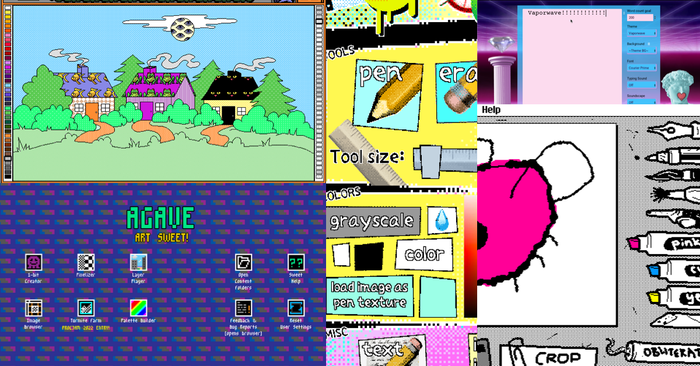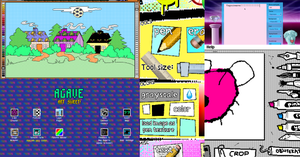
Featured Blog | This community-written post highlights the best of what the game industry has to offer. Read more like it on the Game Developer Blogs.
After finishing FATHOM I made some notes about things I should have done, but didn't. Since these same topics have come up a lot in conversations with other designer friends lately, I thought I'd EXPERT BLOG them.


!peligro!
I feel some reluctance to actually be putting digital words into the interpipes about this topic. First, these ideas are inspired by what I've failed at, not what I've successfully done. Second, these simplified breakdowns of game design theories have a tendency to get weighed down with custom syntax, arbitrary ideas, and genre-specific examples. Third, I've tried to think about things like game design in concrete terms before and usually within a year I either totally or partially regret my public opinions. Fourth, these things tend to be pretentious, high-minded explorations of obvious or self-evident concepts.
Suffice to say, this article is probably a bad idea. But, like it says in the summary, this article is inspired by some notes I made right after I finished my last big project:

fake postit what can i say
Digital notes, but notes nonetheless. Chatting with fellow game designers over the last month or so has led back to these same topics over and over. It might be blue car syndrome, but there might be something important about these ideas too. So, I apologize ahead of time for the exploration of my failures, my arbitrary syntax, my regrettable organization, and the inevitable pretention with which these ideas are expressed.
Into the minefield we go!
Experimentation

i hated these games so much
Experimentation is the core of creative play; it is the process of the player trying different things until they solve the problem, beat the boss, unlock the door, advance to the next area, etc. Sometimes this takes the form of pure trial and error, which is highly experimental. Sometimes it takes the form of reading on-screen directions and pressing buttons in the right order, which is not very experimental. Sometimes it is somewhere in between.
Lately I've been thinking that trial and error, traditionally a flaw or sinkhole, something to be avoided, is actually awesome. I think bad examples of trial and error have muddied the waters a bit. I am not saying that more games need pixel hunts or other obscure, ridiculous puzzles or riddles. I'm not crazy, nor am I a glutton for punishment. I am, however, eager to explore.
So how do we make trial and error gameplay not suck?
Reducing Error: Multiple Solutions

what, it fits! THATS WHAT SHE SAID OOOOoooooo
Let's fix the "error" part of trial and error first. When the player's job is, without any obvious hints or explanations, to resolve the only possible solution by pure luck, generally speaking they are not having a lot of fun. This includes scenarios where the hints or subconcsious guidance are so vague or well-hidden that they might as well not exist. This is the classic definition of "trial and error gameplay," and is rightfully despised by many.
The problem is that you have a solution space of tens if not hundreds or even thousands of possibilities, and only one of them is correct. The most obvious way to improve the player's chances is to simply tell them how to solve the puzzle. However, this sucks, and it is against the rules. Or should be.
A better approach to reducing the likelihood of failure on any given random attempt is to allow the player to solve the puzzle in more than one way. Instead of requiring them to combat the obstacle directly, allow them to run around it or jump over it, and let them manipulate the obstacle with a key item. It's ok to require a player to encounter and pass a specific obstacle, but it's a sin to force them to do it in only one specific way.
Improving Trials: Contextual Reactions

this isn't the flower that i'm talkin about but oh well
Ok, so we know how to make trial and error, and thus experimentation, a little less intimidating and terrifying. That doesn't make it fun! It just makes it suck a little less. This is important, but ultimately insufficient.
What we need to do is make the trials, the player's inputs, more meaningful and more intuitive. It is common knowledge that well-executed context-sensitive input is good interface design. Fewer buttons means that it is easier to learn, and being able to use the same basic action (e.g. "use") on multiple game objects (doors, buttons, people, etc) is a hallmark of accessible gamemaking.
Contextual reactions are also the key to making trial and error gameplay awesome. First, context sensitive input reduces the number of things you can try, period. For example, if you have only one "use" button, rather than having separate buttons for "use", "open", and "talk", you've already cut the number of attempts by two-thirds.
Second, by having a variety of contextual reactions, you are providing an implicit reward for experimentation. My favorite example is in Bit Blot's Aquaria (a ha, I thought I might get around to using a genre-specific example). At one point in the game you unlock the ability to shoot seeds, like plant seeds. These have a singular, specific purpose in activating objects in the game, basically a lock and key system. However, if you shoot a seed at some other object, instead of having nothing happen, a little flower grows in the place where the seed landed. The player still has to find the right object to interact with, but they got a little visual stimulation from simply messing about.
Secret Weapons

oh snap - is this an actual foo fighter??
So far we've talked about ways to essentially reward players who are either brave enough or are otherwise coerced into creative, experimental play. Wouldn't it be nice if there was a way to kind of give them a shove when they first turn the game on?
The first secret weapon for inspiring creative play is inventing a unique new game mechanic. As long as it is accessible, this almost inevitably results in eager player experimentation, to seek out the bounds of this new space. You don't need to goad them out of their comatose task-completion psychology if merely interacting with your game is novel in and of itself. However, there are many inherent risks, such as: this is really, really hard to do.
The second is creating a nonlinear game world for the player to explore. The benefits are probably obvious, but the risks include a lack of immediate goals, and an increase in confusion and intimidation for the player.
You can also try emulating a game or game environment that players are already comfortable exploring or already associate with in a creative way. For example, a game that is reminiscent of Lego or crayons or physics toys can encourage players to experiment. Finally, the right music and atmosphere can sometimes be enough to get players into that creative state of mind.
However, in all of these secret weapon scenarios, we still need to provide a lot of contextual feedback and allow the player multiple opportunities to succeed. These are just ways to give them a nudge in the right direction.
About the Author(s)
You May Also Like








